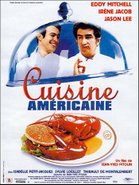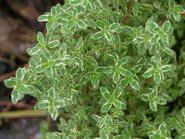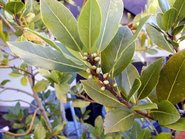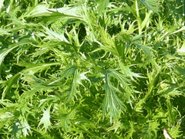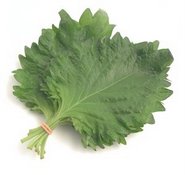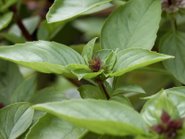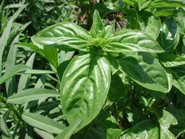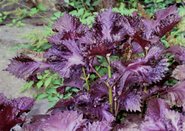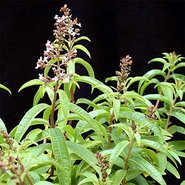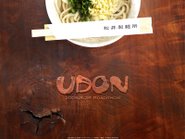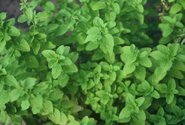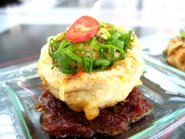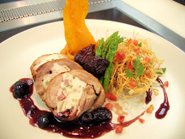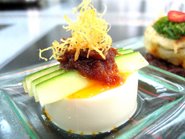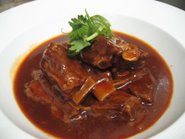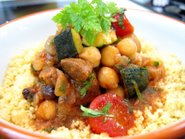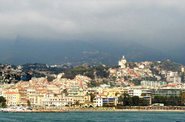Culinary Master Class
World Gourmet Summit 2007
The Fullerton Hotel
Singapore

I had the pleasure of being invited as a guest today to one of the Culinary Masterclass Workshops which is part of the variety of programs offered for the current on going World Gourmet Summit (WGS) here in Singapore. As a chef myself, my scope of work often requires me to address an audience during culinary seminars and conduct workshops for both corporate and public audiences. So a rare opportunity like this would be good for me to get a few tips and pointers from watching a three Michelin starred Masterchef in action.

The celebrity in focus is Chef Heinz Winkler from Residenz Heinz Winkler, Germany. He is also the Iconic Chef for this year’s WGS focusing on Cuisine Vitale which combines the style of gourmet cooking that features simplicity and natural flavours of ingredients with fresh herbs and spices. This establishes a well being or wellness element in the art of gastronomy which is the success story of his business.

The demonstration menu was also to become our tasting menu for lunch. The three course menu focused on spring season’s ingredients like salmon and morels paired with wines from Miguel Torres. Before I elaborate further on the tasting menu, I was already gaining valuable points on doing workshops like these for my future references. I must say here in Singapore, most of the time the audiences are not as interactive as the ones I have encountered in US and Europe. People here tend to be more shy and are rather slow to warm up to an interactive session with the chef in action. This happens also many a time in my own workshops too where despite encouraging them to loosen up and be more interactive, you can still see dead serious faces. This is actually the participants’ loss as the chef is here to teach and share, if u don’t take the opportunity to tap on him for expert advice, he/she won't know what you would like to know. Also do not be stingy to show appreciation or give compliments and feedback to chefs who have cooked for you. Many times we forget to compliment the chefs in the kitchen when we have enjoyed our food in the restaurants. It is the same when it comes to workshops. To be honest, real good chefs cook for satisfaction and not money so any compliments or constructive feedback will always motivate us to do better the next round.
Coming back on the menu, Chef Winkler was showcasing to us two recipes from it and this was a Carpaccio of Salmon and Scallops with Lime Dressing while the second dish was a Crepinete of Veal Fillet with a Herb Farce and Fresh Morels.

The Carpaccio was a combination of thin salmon fillets alternated with equally thin slices of Canadian Scallops. A drizzle with lemon juice, lime zest and extra virgin olive oil liven up the taste of the seafood giving it a wake up kiss of citrus fragrance. Finely snipped chives and freshly grounded red peppercorns gave the dish a touch of finesse. The dressing was so good that I could just mop it up with pieces of bread discovering another dimension of nuttiness and citrus synergy with the multigrain loaf. A lovely Chilean Sauvignon Blanc, 2005 Cordillera Maquehua from Miguel Torres complimented the seafood starter. The wine’s acidity took to the citrus notes of the carparccio’s dressing like a fish to water and the wine’s slight herbaceous notes were highlight with the light shower of snipped chives. It was a very clean finish on the palate, taking the seafood in harmony along with it.

With spring in season now, one of natures’greatest culinary gift at this time of the year are fresh morel mushrooms. Found in Europe, China and North America, this wild mushrooms have a woody earthy aromas with springy textures. Considered to be one the most expensive mushrooms in the fungus family after truffles, they have a natural affinity with cream and butter. They make great companions to choice cuts of meats and seafood and are excellent taste enhancers for sauces and gravies. Chef Winkler was very kind to share some fresh varieties with us pass the “gems” around for us to have a feel of this exotic fungus. They almost still the lime light from the highlight of Chef Winkler’s second dish, the Crepinette of Veal Tenderloin with Morels.

This was a dish that would have a moderate level of technical difficulties for home cooks as it involves quite a bit work. Taking finely pureed spinach and fresh herbs like parsley and basil, Chef Winkler mix it up with a smooth blend of chicken breast meat, giving it a herbaceous green tinge. Next, he took a bundle of pig’s caul or pork net as it is more commonly known here and spread it over a cutting board. Using the farce to encrust the season veal tenderloin, it was wrapped with the pig’s caul into a neat little green parcel. Seared in a hot pan, it was further pan roasted to a perfect undercooked doneness before being sliced and paired with a light veal jus.

The morels danced around the elegant cut up parcel and a creamy potato au gratin gave the mushrooms an excellent opportunity to unlock their wonderful flavours when you put a part of each together on your palate. Nonetheless, the complimenting wine, a 2003 Miguel Torres, Cordillera Red performed well with this dish too. A blended New World red, it is a composition of Carbernet Sauvignon, Merlot and Syrah give the wine its necessary black berries fruity notes, spice aromas like dark chocolate, eucalyptus and mace and a pacifying ability to tame the harsh tannins. It took a while for the spices and aromas to evolve but the wine help to cut the richness gratin and the slightly over done but still juicy veal. The demo piece had achieved a better doneness for my personal taste.

On a side note, I must also compliment the excellent bread and fragrant smooth Isigny butter that I had always loved during my days working in south of France. They help to fill the gap between the small portions of the three courses.

An Ice cream of Sour Cream with Rhubarb Compote and Fresh Raspberry was the dessert that saw a late harvest Riesling, a 2004 Miguel Torres Vendimia Tardia coming in to the rescue of a dessert with to many sour components. The home made ice cream was half liquefied by the time it arrived but still took on well to the rhubarb compote despite being in its semi conscious state.

We manage to enjoy the home made pralines presented elegantly on a fine pieces of sugar work. The lovely variety of garnache, liquer and fruit filled chocolate pieces made it a sweet ending to the inspiring lunch of natural flavours, simplicity and culinary elegance. Unfortunately we had to miss the complimentary New Zealand artisan cheeses sampling as we were pressed for time to be back in office for a meeting. Next time we should be wiser to allow an extra half an hour for unforeseen surprises like cheese tasting.
 Given the occasion, it would be nice to cook something that can also be shared easily by all other invited VIPs and grassroots members. While I have had the many opportunities to cook for many foreign dignitaries and Hollywood celebrities during my years working abroad, I never had the chance to cook something for any one of our own country's leaders until today. N was all ready with the camera and as soon as the man himself walked in, it was all clicks and flashes. After introductions and some small talk with SM, it was time to do my showpiece, which was the Stewed Mee Pok with XO Sauce and Fresh Prawns. This was a recipe extracted from one the Chinese New Year Menu Workshops earlier this year and has always proven to be a hit with everyone that has come across it. I choose this dish because mee pok (fettuccine like noodles) are a very part of every Singaporean's diet and the XO sauce was an inspiration from Orchard's Hotel Hua Ting's Restaurant Chinese Executive Chef, Chan Kwok.
Given the occasion, it would be nice to cook something that can also be shared easily by all other invited VIPs and grassroots members. While I have had the many opportunities to cook for many foreign dignitaries and Hollywood celebrities during my years working abroad, I never had the chance to cook something for any one of our own country's leaders until today. N was all ready with the camera and as soon as the man himself walked in, it was all clicks and flashes. After introductions and some small talk with SM, it was time to do my showpiece, which was the Stewed Mee Pok with XO Sauce and Fresh Prawns. This was a recipe extracted from one the Chinese New Year Menu Workshops earlier this year and has always proven to be a hit with everyone that has come across it. I choose this dish because mee pok (fettuccine like noodles) are a very part of every Singaporean's diet and the XO sauce was an inspiration from Orchard's Hotel Hua Ting's Restaurant Chinese Executive Chef, Chan Kwok. The Verdict by SM Goh to all other VIPs on the floor after he tasted the noodles: "Goh" for it!!
The Verdict by SM Goh to all other VIPs on the floor after he tasted the noodles: "Goh" for it!!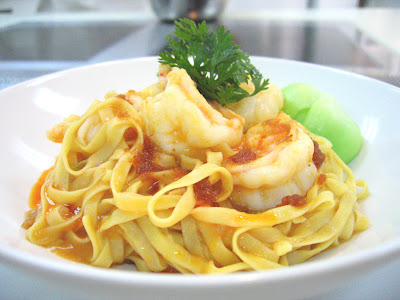 4 portions
4 portions Here at Leong Kee, they offer the Klang version of Bak Kut Teh. The pork ribs are simmered in a broth enriched with dark soya and Chinese herbs like Dang Gui, Anise, Ginseng and Cinnamon. Pork skin minus the fat are also added in along with fried beancurd skin, giving the broth a slight toasty aroma. When the ribs are well simmered, not only it gives a rich flavour to the broth, the addition of pig skin gives the broth a slight gelatinous flow and adds complexity to the palate. To many people, this is the difference that distinguishes Klang style Bak Kut Teh with our local version, making us feel that we are drinking a richer fuller and tastier broth. Mushrooms are also added to the broth for garnishing as well as fresh lettuce. This makes the whole dish look more balance and complete that just soup and bones. For the pass three occasions that my wife N and I were there, the herbal notes though were inconsistent, but still kept the soup pleasant. First time we had stronger notes of anise root, second time we got a larger dose of danggui and our most recent visit found cinnamon and star anise fronting the bouquet of herbal aromas.
Here at Leong Kee, they offer the Klang version of Bak Kut Teh. The pork ribs are simmered in a broth enriched with dark soya and Chinese herbs like Dang Gui, Anise, Ginseng and Cinnamon. Pork skin minus the fat are also added in along with fried beancurd skin, giving the broth a slight toasty aroma. When the ribs are well simmered, not only it gives a rich flavour to the broth, the addition of pig skin gives the broth a slight gelatinous flow and adds complexity to the palate. To many people, this is the difference that distinguishes Klang style Bak Kut Teh with our local version, making us feel that we are drinking a richer fuller and tastier broth. Mushrooms are also added to the broth for garnishing as well as fresh lettuce. This makes the whole dish look more balance and complete that just soup and bones. For the pass three occasions that my wife N and I were there, the herbal notes though were inconsistent, but still kept the soup pleasant. First time we had stronger notes of anise root, second time we got a larger dose of danggui and our most recent visit found cinnamon and star anise fronting the bouquet of herbal aromas. What N really likes too is to dunk the pieces of pork ribs with the superior dark soy sauce. Far better than most commercial dark soy that I have tasted, the lovely dark soy serve here as a dip could be just a Malaysian artisan backyard version that nonetheless delivers an excellent taste with the meaty pork ribs. Pair with cut chili paddies, N can just eat the combination off over plain rice.
What N really likes too is to dunk the pieces of pork ribs with the superior dark soy sauce. Far better than most commercial dark soy that I have tasted, the lovely dark soy serve here as a dip could be just a Malaysian artisan backyard version that nonetheless delivers an excellent taste with the meaty pork ribs. Pair with cut chili paddies, N can just eat the combination off over plain rice.  Leong Kee also does a very good pork trotter stew. What I like is they never reject a request to have a leaner cut of meat. The trotters are always well stewed to a lovely tenderness in superior soy, garlic and spices. Having the rich gravy mixed with rice just makes me go ooh la la! N also got hooked onto this dish ever since experiencing Koo Kha Moo or Thailand’s version of stew pork trotters over rice with salted vegetables and eggs when we first traveled together.
Leong Kee also does a very good pork trotter stew. What I like is they never reject a request to have a leaner cut of meat. The trotters are always well stewed to a lovely tenderness in superior soy, garlic and spices. Having the rich gravy mixed with rice just makes me go ooh la la! N also got hooked onto this dish ever since experiencing Koo Kha Moo or Thailand’s version of stew pork trotters over rice with salted vegetables and eggs when we first traveled together. The side dishes were well done too. U can go for side plates of oyster sauce vegetables that come dressed with oyster sauce and fragrant shallot oil. A generous sprinkling of shallots and few crispy cubes of fried pork lard adds a more sinful dimension to the whole dish.
The side dishes were well done too. U can go for side plates of oyster sauce vegetables that come dressed with oyster sauce and fragrant shallot oil. A generous sprinkling of shallots and few crispy cubes of fried pork lard adds a more sinful dimension to the whole dish.  The other options are pretty standard like braised taupok, soy braised eggs and pickled vegetables. Another good idea is to get a side portion of dough fritters to dip into the broth of the Bak Kut Teh or gravy of their Stewed Pork Trotters. Pity is that most Bak Kut Teh stalls always serve stale cold cut dough fritters. Anyway, what really deserves a special mention should be their braised peanuts which I found to be very flavourful and delicious. I could just eat a whole plate by itself! Its was very well braised with the nuts absorbing the soy, garlic and streaky pork flavours, making it really rich and tasty with a lingering umami sensation on the palate.
The other options are pretty standard like braised taupok, soy braised eggs and pickled vegetables. Another good idea is to get a side portion of dough fritters to dip into the broth of the Bak Kut Teh or gravy of their Stewed Pork Trotters. Pity is that most Bak Kut Teh stalls always serve stale cold cut dough fritters. Anyway, what really deserves a special mention should be their braised peanuts which I found to be very flavourful and delicious. I could just eat a whole plate by itself! Its was very well braised with the nuts absorbing the soy, garlic and streaky pork flavours, making it really rich and tasty with a lingering umami sensation on the palate.
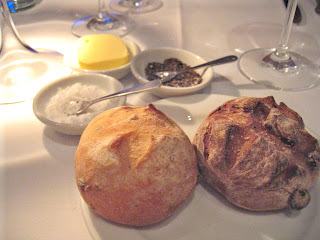 Our assigned table wasn't really an ideal place putting us against a ceiling to floor mirror. It made us felt as if the whole restaurant was watching the both of us eat. However this was soon forgotten as we settle in to the nice hot rolls with butter after our orders were taken.Usually I take it that if a restaurant can start your dinning experience with quality bread rolls, the rest of the food should be just as good.
Our assigned table wasn't really an ideal place putting us against a ceiling to floor mirror. It made us felt as if the whole restaurant was watching the both of us eat. However this was soon forgotten as we settle in to the nice hot rolls with butter after our orders were taken.Usually I take it that if a restaurant can start your dinning experience with quality bread rolls, the rest of the food should be just as good. 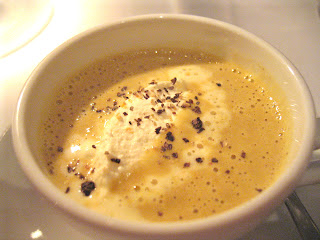
 With our tummies warmed up, we took on the two separate appetizers. N had picked a Ballotine of Cured Foie Gras, Mallard and Plums with Roasting Juices, Apple and Hazelnut Vinaigrette. Consider it was an appetizer, the serving portion to me was consider quit generous. A smooth blend of foie gras with a plum stufing was encrusted by pieces of duck meat and wrap with proscuito. Upon slow roasting, the ballotine was chilled before slicing and served with some of its roast jus. A lovely Apple and Hazelnut vinaigrette helped to cut the richness of the foie with the right level of acidity. The brioche bread served was a lovely cushion to the delicate foie gras and we used the extra bread to mop up the wonderful juices and vinaigrette.
With our tummies warmed up, we took on the two separate appetizers. N had picked a Ballotine of Cured Foie Gras, Mallard and Plums with Roasting Juices, Apple and Hazelnut Vinaigrette. Consider it was an appetizer, the serving portion to me was consider quit generous. A smooth blend of foie gras with a plum stufing was encrusted by pieces of duck meat and wrap with proscuito. Upon slow roasting, the ballotine was chilled before slicing and served with some of its roast jus. A lovely Apple and Hazelnut vinaigrette helped to cut the richness of the foie with the right level of acidity. The brioche bread served was a lovely cushion to the delicate foie gras and we used the extra bread to mop up the wonderful juices and vinaigrette.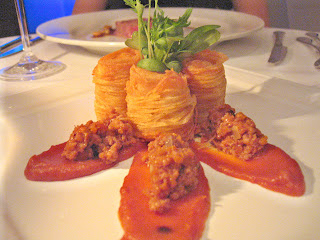 I opted for the Caramelised Veal Sweetbreads Croustillant, served with Cepes Bolognese and Tomato Jam. Sweetbreads are rarely served in restaurants in Singapore and few chefs here put them out on their menus here. They are the most prized of all offals for the mild taste,velvety texture and multi cooking techniques versatility. Usually sourced from lamb or veal, sweetbreads are either the thymus glands or pancreas from the two types of young cattle. Chef Raymond presented his sweetbreads as appetisers in a very innovative way. Wrapped in spring roll pastry and tied around with fine noodles or pasta, it was sliced and deep fried to a lovely crisp. A tarty Ceps Bolognese which is actually replacing the beef in the classical sauce with fresh meaty Ceps (Porcinis) mushrooms served as a condiment to the crispy sweetbreads. The earthy meaty mushroms gave the Bolognese a signature mushroom character which was nice compliment to the delicate sweetbreads. The taste was further enriched by the tomato jam and having all three in your mouth at one go evoke a nostalgic, rustic feeling of eating sweetbreads in a mama Italia restaurant in Ventimiglia some years back.
I opted for the Caramelised Veal Sweetbreads Croustillant, served with Cepes Bolognese and Tomato Jam. Sweetbreads are rarely served in restaurants in Singapore and few chefs here put them out on their menus here. They are the most prized of all offals for the mild taste,velvety texture and multi cooking techniques versatility. Usually sourced from lamb or veal, sweetbreads are either the thymus glands or pancreas from the two types of young cattle. Chef Raymond presented his sweetbreads as appetisers in a very innovative way. Wrapped in spring roll pastry and tied around with fine noodles or pasta, it was sliced and deep fried to a lovely crisp. A tarty Ceps Bolognese which is actually replacing the beef in the classical sauce with fresh meaty Ceps (Porcinis) mushrooms served as a condiment to the crispy sweetbreads. The earthy meaty mushroms gave the Bolognese a signature mushroom character which was nice compliment to the delicate sweetbreads. The taste was further enriched by the tomato jam and having all three in your mouth at one go evoke a nostalgic, rustic feeling of eating sweetbreads in a mama Italia restaurant in Ventimiglia some years back.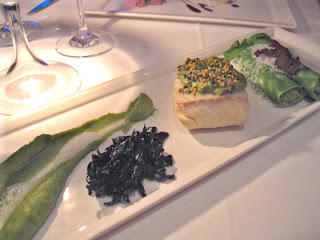 For main courses I opted for a Poached Halibut with Green Pea Puree, Dorset Crab Canneloni. Culinary artistry denotes that green as a food colour should more often be a compliment than a main. Not that it is not possible but when attempting to be the latter, the chef must know how to execute it in the right way. My dish was dominated by a leafy green but Chef Raymond had cleverly put it to the background and allow other ingredients to stand out.
For main courses I opted for a Poached Halibut with Green Pea Puree, Dorset Crab Canneloni. Culinary artistry denotes that green as a food colour should more often be a compliment than a main. Not that it is not possible but when attempting to be the latter, the chef must know how to execute it in the right way. My dish was dominated by a leafy green but Chef Raymond had cleverly put it to the background and allow other ingredients to stand out. 
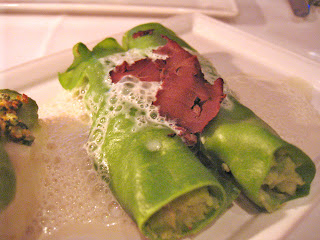
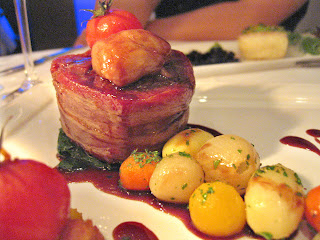 Feeling in the mood for meat, N decided to go for the Scotch Aberdeen Angus Fillet. Sitting on a bed of wilted spinach, the bacon wrapped tenderloin was cooked to a beautiful medium doneness and topped with a sinfully rich piece of bone marrow. This gave a lot of tallow-like beefy notes to the fillet, enriching the taste of the meat when you bite on it.
Feeling in the mood for meat, N decided to go for the Scotch Aberdeen Angus Fillet. Sitting on a bed of wilted spinach, the bacon wrapped tenderloin was cooked to a beautiful medium doneness and topped with a sinfully rich piece of bone marrow. This gave a lot of tallow-like beefy notes to the fillet, enriching the taste of the meat when you bite on it.  The side garnishes to the tenderlon was equally as interesting. Since it was winter where savoy cabbages are in season, the chef used it to make a layered vegetable terrine that also included bell peppers. and bacon. A small side selection of buttered parisienne vegetables completed the whole masterpiece.
The side garnishes to the tenderlon was equally as interesting. Since it was winter where savoy cabbages are in season, the chef used it to make a layered vegetable terrine that also included bell peppers. and bacon. A small side selection of buttered parisienne vegetables completed the whole masterpiece.
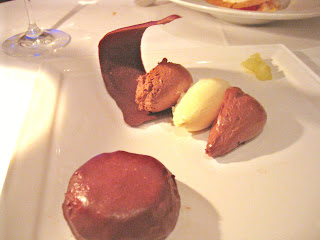
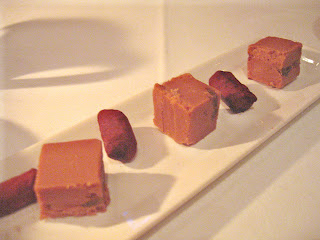
 I had the pleasure of being invited as a guest today to one of the Culinary Masterclass Workshops which is part of the variety of programs offered for the current on going World Gourmet Summit (WGS) here in Singapore. As a chef myself, my scope of work often requires me to address an audience during culinary seminars and conduct workshops for both corporate and public audiences. So a rare opportunity like this would be good for me to get a few tips and pointers from watching a three Michelin starred Masterchef in action.
I had the pleasure of being invited as a guest today to one of the Culinary Masterclass Workshops which is part of the variety of programs offered for the current on going World Gourmet Summit (WGS) here in Singapore. As a chef myself, my scope of work often requires me to address an audience during culinary seminars and conduct workshops for both corporate and public audiences. So a rare opportunity like this would be good for me to get a few tips and pointers from watching a three Michelin starred Masterchef in action. The celebrity in focus is Chef Heinz Winkler from Residenz Heinz Winkler, Germany. He is also the Iconic Chef for this year’s WGS focusing on Cuisine Vitale which combines the style of gourmet cooking that features simplicity and natural flavours of ingredients with fresh herbs and spices. This establishes a well being or wellness element in the art of gastronomy which is the success story of his business.
The celebrity in focus is Chef Heinz Winkler from Residenz Heinz Winkler, Germany. He is also the Iconic Chef for this year’s WGS focusing on Cuisine Vitale which combines the style of gourmet cooking that features simplicity and natural flavours of ingredients with fresh herbs and spices. This establishes a well being or wellness element in the art of gastronomy which is the success story of his business. The demonstration menu was also to become our tasting menu for lunch. The three course menu focused on spring season’s ingredients like salmon and morels paired with wines from Miguel Torres. Before I elaborate further on the tasting menu, I was already gaining valuable points on doing workshops like these for my future references. I must say here in Singapore, most of the time the audiences are not as interactive as the ones I have encountered in US and Europe. People here tend to be more shy and are rather slow to warm up to an interactive session with the chef in action. This happens also many a time in my own workshops too where despite encouraging them to loosen up and be more interactive, you can still see dead serious faces. This is actually the participants’ loss as the chef is here to teach and share, if u don’t take the opportunity to tap on him for expert advice, he/she won't know what you would like to know. Also do not be stingy to show appreciation or give compliments and feedback to chefs who have cooked for you. Many times we forget to compliment the chefs in the kitchen when we have enjoyed our food in the restaurants. It is the same when it comes to workshops. To be honest, real good chefs cook for satisfaction and not money so any compliments or constructive feedback will always motivate us to do better the next round.
The demonstration menu was also to become our tasting menu for lunch. The three course menu focused on spring season’s ingredients like salmon and morels paired with wines from Miguel Torres. Before I elaborate further on the tasting menu, I was already gaining valuable points on doing workshops like these for my future references. I must say here in Singapore, most of the time the audiences are not as interactive as the ones I have encountered in US and Europe. People here tend to be more shy and are rather slow to warm up to an interactive session with the chef in action. This happens also many a time in my own workshops too where despite encouraging them to loosen up and be more interactive, you can still see dead serious faces. This is actually the participants’ loss as the chef is here to teach and share, if u don’t take the opportunity to tap on him for expert advice, he/she won't know what you would like to know. Also do not be stingy to show appreciation or give compliments and feedback to chefs who have cooked for you. Many times we forget to compliment the chefs in the kitchen when we have enjoyed our food in the restaurants. It is the same when it comes to workshops. To be honest, real good chefs cook for satisfaction and not money so any compliments or constructive feedback will always motivate us to do better the next round. The Carpaccio was a combination of thin salmon fillets alternated with equally thin slices of Canadian Scallops. A drizzle with lemon juice, lime zest and extra virgin olive oil liven up the taste of the seafood giving it a wake up kiss of citrus fragrance. Finely snipped chives and freshly grounded red peppercorns gave the dish a touch of finesse. The dressing was so good that I could just mop it up with pieces of bread discovering another dimension of nuttiness and citrus synergy with the multigrain loaf. A lovely Chilean Sauvignon Blanc, 2005 Cordillera Maquehua from Miguel Torres complimented the seafood starter. The wine’s acidity took to the citrus notes of the carparccio’s dressing like a fish to water and the wine’s slight herbaceous notes were highlight with the light shower of snipped chives. It was a very clean finish on the palate, taking the seafood in harmony along with it.
The Carpaccio was a combination of thin salmon fillets alternated with equally thin slices of Canadian Scallops. A drizzle with lemon juice, lime zest and extra virgin olive oil liven up the taste of the seafood giving it a wake up kiss of citrus fragrance. Finely snipped chives and freshly grounded red peppercorns gave the dish a touch of finesse. The dressing was so good that I could just mop it up with pieces of bread discovering another dimension of nuttiness and citrus synergy with the multigrain loaf. A lovely Chilean Sauvignon Blanc, 2005 Cordillera Maquehua from Miguel Torres complimented the seafood starter. The wine’s acidity took to the citrus notes of the carparccio’s dressing like a fish to water and the wine’s slight herbaceous notes were highlight with the light shower of snipped chives. It was a very clean finish on the palate, taking the seafood in harmony along with it. With spring in season now, one of natures’greatest culinary gift at this time of the year are fresh morel mushrooms. Found in Europe, China and North America, this wild mushrooms have a woody earthy aromas with springy textures. Considered to be one the most expensive mushrooms in the fungus family after truffles, they have a natural affinity with cream and butter. They make great companions to choice cuts of meats and seafood and are excellent taste enhancers for sauces and gravies. Chef Winkler was very kind to share some fresh varieties with us pass the “gems” around for us to have a feel of this exotic fungus. They almost still the lime light from the highlight of Chef Winkler’s second dish, the Crepinette of Veal Tenderloin with Morels.
With spring in season now, one of natures’greatest culinary gift at this time of the year are fresh morel mushrooms. Found in Europe, China and North America, this wild mushrooms have a woody earthy aromas with springy textures. Considered to be one the most expensive mushrooms in the fungus family after truffles, they have a natural affinity with cream and butter. They make great companions to choice cuts of meats and seafood and are excellent taste enhancers for sauces and gravies. Chef Winkler was very kind to share some fresh varieties with us pass the “gems” around for us to have a feel of this exotic fungus. They almost still the lime light from the highlight of Chef Winkler’s second dish, the Crepinette of Veal Tenderloin with Morels. This was a dish that would have a moderate level of technical difficulties for home cooks as it involves quite a bit work. Taking finely pureed spinach and fresh herbs like parsley and basil, Chef Winkler mix it up with a smooth blend of chicken breast meat, giving it a herbaceous green tinge. Next, he took a bundle of pig’s caul or pork net as it is more commonly known here and spread it over a cutting board. Using the farce to encrust the season veal tenderloin, it was wrapped with the pig’s caul into a neat little green parcel. Seared in a hot pan, it was further pan roasted to a perfect undercooked doneness before being sliced and paired with a light veal jus.
This was a dish that would have a moderate level of technical difficulties for home cooks as it involves quite a bit work. Taking finely pureed spinach and fresh herbs like parsley and basil, Chef Winkler mix it up with a smooth blend of chicken breast meat, giving it a herbaceous green tinge. Next, he took a bundle of pig’s caul or pork net as it is more commonly known here and spread it over a cutting board. Using the farce to encrust the season veal tenderloin, it was wrapped with the pig’s caul into a neat little green parcel. Seared in a hot pan, it was further pan roasted to a perfect undercooked doneness before being sliced and paired with a light veal jus. The morels danced around the elegant cut up parcel and a creamy potato au gratin gave the mushrooms an excellent opportunity to unlock their wonderful flavours when you put a part of each together on your palate. Nonetheless, the complimenting wine, a 2003 Miguel Torres, Cordillera Red performed well with this dish too. A blended New World red, it is a composition of Carbernet Sauvignon, Merlot and Syrah give the wine its necessary black berries fruity notes, spice aromas like dark chocolate, eucalyptus and mace and a pacifying ability to tame the harsh tannins. It took a while for the spices and aromas to evolve but the wine help to cut the richness gratin and the slightly over done but still juicy veal. The demo piece had achieved a better doneness for my personal taste.
The morels danced around the elegant cut up parcel and a creamy potato au gratin gave the mushrooms an excellent opportunity to unlock their wonderful flavours when you put a part of each together on your palate. Nonetheless, the complimenting wine, a 2003 Miguel Torres, Cordillera Red performed well with this dish too. A blended New World red, it is a composition of Carbernet Sauvignon, Merlot and Syrah give the wine its necessary black berries fruity notes, spice aromas like dark chocolate, eucalyptus and mace and a pacifying ability to tame the harsh tannins. It took a while for the spices and aromas to evolve but the wine help to cut the richness gratin and the slightly over done but still juicy veal. The demo piece had achieved a better doneness for my personal taste. On a side note, I must also compliment the excellent bread and fragrant smooth Isigny butter that I had always loved during my days working in south of France. They help to fill the gap between the small portions of the three courses.
On a side note, I must also compliment the excellent bread and fragrant smooth Isigny butter that I had always loved during my days working in south of France. They help to fill the gap between the small portions of the three courses. An Ice cream of Sour Cream with Rhubarb Compote and Fresh Raspberry was the dessert that saw a late harvest Riesling, a 2004 Miguel Torres Vendimia Tardia coming in to the rescue of a dessert with to many sour components. The home made ice cream was half liquefied by the time it arrived but still took on well to the rhubarb compote despite being in its semi conscious state.
An Ice cream of Sour Cream with Rhubarb Compote and Fresh Raspberry was the dessert that saw a late harvest Riesling, a 2004 Miguel Torres Vendimia Tardia coming in to the rescue of a dessert with to many sour components. The home made ice cream was half liquefied by the time it arrived but still took on well to the rhubarb compote despite being in its semi conscious state. We manage to enjoy the home made pralines presented elegantly on a fine pieces of sugar work. The lovely variety of garnache, liquer and fruit filled chocolate pieces made it a sweet ending to the inspiring lunch of natural flavours, simplicity and culinary elegance. Unfortunately we had to miss the complimentary New Zealand artisan cheeses sampling as we were pressed for time to be back in office for a meeting. Next time we should be wiser to allow an extra half an hour for unforeseen surprises like cheese tasting.
We manage to enjoy the home made pralines presented elegantly on a fine pieces of sugar work. The lovely variety of garnache, liquer and fruit filled chocolate pieces made it a sweet ending to the inspiring lunch of natural flavours, simplicity and culinary elegance. Unfortunately we had to miss the complimentary New Zealand artisan cheeses sampling as we were pressed for time to be back in office for a meeting. Next time we should be wiser to allow an extra half an hour for unforeseen surprises like cheese tasting.
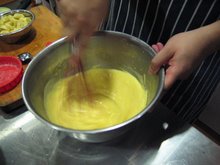

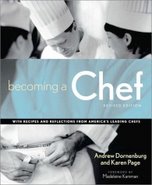
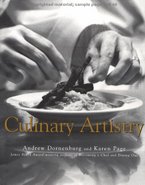





.jpg)
